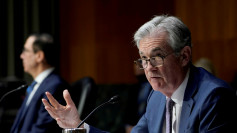In the Asia Pacific, lending conditions have been made tighter, and the real estate market is all the better for it. This was revealed by The Investor, where new and alternative sources to debt capital have been flooding the region. Local banks remained the first institution people flock to, but lenders from abroad have steadily been becoming a go-to partner for many of the region's top investors and real estate developers.
An example has already been established in Australia, where foreign banks have been increasing their loan exposure in relation to commercial real estate. From December 2015 to December 2018, the Australian Prudential Regulation Authority reported loan exposure by 136 percent.
Fergal Harris, head of debt advisory for Jones Lang LaSalle's Asia Pacific division, said that this definitely was a sign that global investors are lending to the Asia Pacific real estate market. Compared to North America and Europe, with their "mature" private debt markets and competitive real estate rates, the credit markets in Asia can be seen as an emerging commodity which is still relatively untapped.
However, the Asia-Pacific real estate surge is more a collection of other global occurrences. According to Thailand Business News, aside from new lending, economic conditions in the US may have influenced the real estate surge.
The latest GDP growth rate so far has been placed at 4.1% annually, the strongest rating in four years.
Economic growth combined with robust employment and pressure on inflation that trends upward suggests that rate hikes will continue over the course of the year.
US interest rates revealed that traders are bullish about the rate hike, indicating a probability of a 94% rate hike in September worth 2-2.25% up to a 68% chance that it will climb up 2.25-2.50% in December.
Emerging markets in Asia have become more volatile, however. The rise of US currency is influencing this as well, with most of these markets experiencing this volatility in their capital inflows and outflows. It has placed a lot of pressure on these EMs currencies, which has since depreciated against the dollar. India, Indonesia, and the Philippines have notably shifted higher rates.
That, however, hasn't dampened interest in the Asia-Pacific market. China remained a bright spot, as well, as offshore investors kept their sights trained on the country's real estate markets. Markets in Asia are risky since they pose "greater political and economic risks" than Western markets to their respective countries. But the rewards make the risks worth it.




